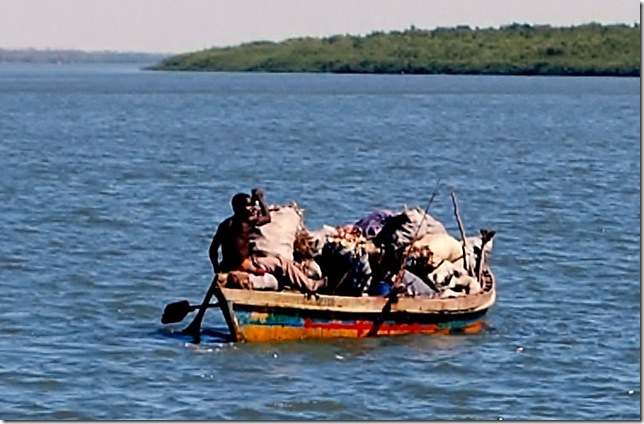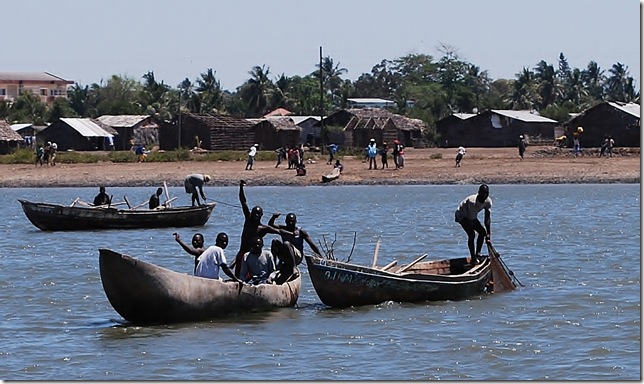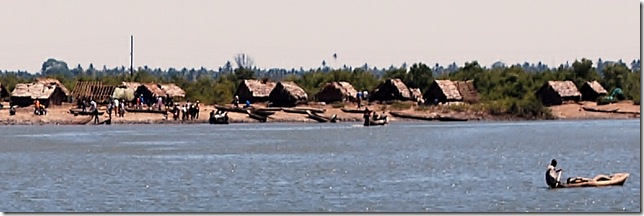It has been a pretty eventful couple of days as far as days at sea go. We found the mighty, southerly Mozambique current, and it added 2-3 knots to our speed for two days straight. Couple that with Friday’s 20 knot winds from the stern, and you have the fastest day ever for Pura Vida – over 200 miles. For several hours of my watch, our speed over ground (SOG = sailing speed + current) was consistently 11-12 knots!
With southerly winds expected on Sunday, we had originally planned to sail to a little uninhabited island called Casurina to wait for a weather window to continue to head south, but the burst of speed allowed us to continue on to Quelimane where we just dropped the anchor. This is an actual city with well-stocked stores and markets, restaurants, a couple of clubs, a public swimming pool, and as it turns out, Internet. Oh yeah.
The city is set 18 miles inland along a river. On our way into the river mouth, we began to see the dugout canoes gathering around the mouth of the river. Dallas was a little unnerved by this – it felt really strange to be bringing a cruising catamaran into such an impoverished area that we knew very little about. But the fishermen just waved and watched us pass, and a few motioned to their bellies to suggest that they wanted food. This was when I got my first pangs of white-privilege-guilt. I’m sure they won’t be the last while here in Mozambique, but that’s OK with me. I think it’s a good thing to experience and a big reason why I wanted to come here. Especially in the midst of the global economic recession, it’s good to put things into perspective. Most folks here live on less than $1/day in shanties amidst malaria-infested mosquitoes swirling around in the searing summer heat. According to stats just received from Wes, the average life expectancy for Mozambique is 47!
After seeing the undeveloped villages along the river, it was bizarre to arrive in Quelimane-proper and see a couple of high-rise buildings and other remnants of the Portuguese colonial days. According to our cruising guide, the Portuguese held the coast of Mozambique for over 200 years with just a few soldiers and traders who used the natives for free labor. The natives formed independence movements, began an armed revolt in 1964, and became independent 10 years later, but when the whites left, so did the skilled labor and equipment, and the subsequent socialist economy left people even more impoverished. If that wasn’t enough, a resistance movement funded by Rhodesia (now Zimbabwe) and South Africa started a 20-year civil war. From the cruising guide: “All useful buildings or services were destroyed, and anyone deemed skilled were hunted down and shot.” It’s a depressing history to say the least, but since the first democratic elections in 1994, life in Mozambique has become more civil with many signs of development. Nevertheless, it’s very Third World, so you can imagine my surprise when I turned on my computer to write a blog and discovered that we could get wireless internet from the boat! That will be nice to have, as it looks like we may be here several days before a window opens up to move south to the Bazaruto archipelago.




